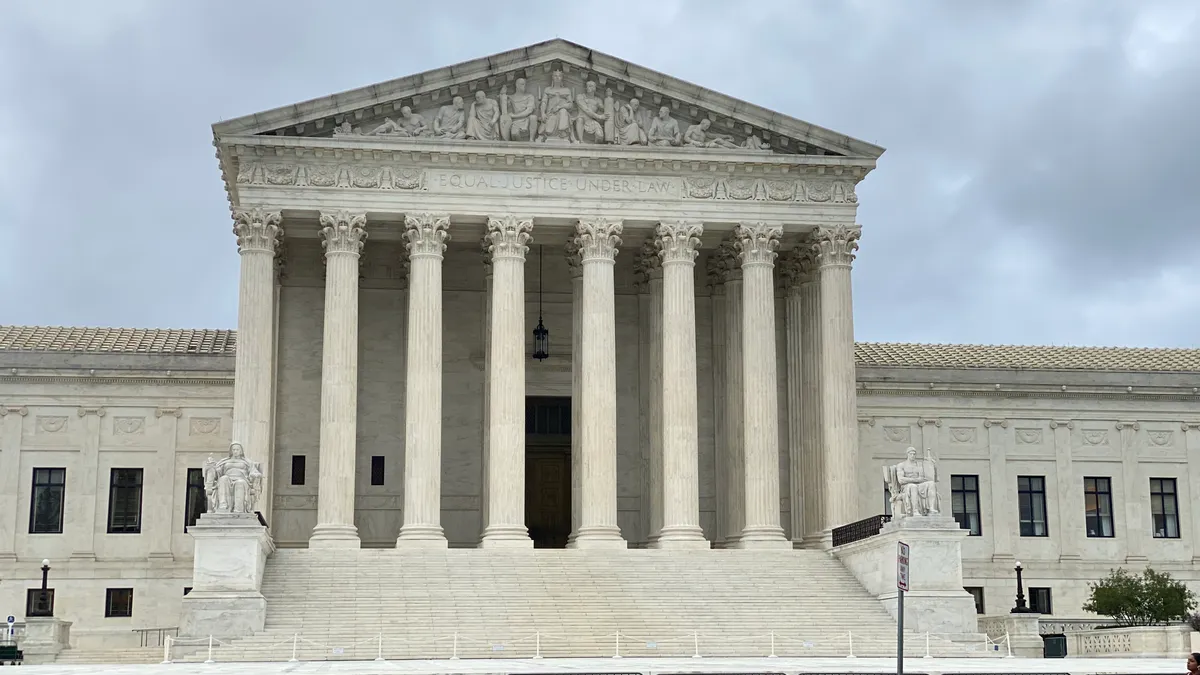Dive Brief:
- The U.S. Supreme Court on Thursday struck down race-conscious admissions policies at Harvard University and the University of North Carolina at Chapel Hill, curtailing affirmative action and setting back efforts to diversify the nation’s physician workforce, according to industry groups.
- The Biden administration also pushed back on the ruling, saying the decision weakens efforts to make higher education more accessible and increase the number of Black and Latino doctors. Currently, only about 6% of active physicians are Black, about 7% are Hispanic and 0.3% are American Indian or Alaska Native, according to data from the Association of American Medical Colleges.
- “This ruling will make it even more difficult for the nation’s colleges and universities to help create future health experts and workers that reflect the diversity of our great nation,” HHS Secretary Xavier Becerra said in a statement. “The health and wellbeing of Americans will suffer as a result.”
Dive Insight:
Thursday’s controversial ruling found that race-conscious admissions programs at Harvard and UNC were unconstitutional, violating the 14th Amendment’s clause that guarantees equal protection under the law.
Students for Fair Admissions had sued the schools, arguing UNC favored Black and Hispanic applicants, while Asian applicants were discriminated against at Harvard. In his opinion, Chief Justice John Roberts wrote universities are allowed to consider how race affects applicants’ life experience, “so long as that discussion is concretely tied to a quality of character or unique ability that the particular applicant can contribute to the university.”
But healthcare industry groups like the American Medical Association argued the decision could set back efforts to improve racial health inequities.
“There is convincing evidence that racially diverse care teams produce measurably positive health outcomes for patients in historically marginalized populations,” AMA president Jesse Ehrenfeld said in a statement on Thursday. “The goal is not racially segregated care, but rather a healthcare workforce in which racial and ethnic representation is a more common aspect of care teams.”
The AMA adopted a policy recognizing race as an important factor to ensure a diverse physician workforce during its annual meeting earlier this month.
In states that banned affirmative action, the proportion of students from underrepresented racial and ethnic minority groups in public medical schools fell by more than one-third five years later, according to research published in the Annals of Internal Medicine.
“Today’s decision demonstrates a lack of understanding of the critical benefits of racial and ethnic diversity in educational settings and a failure to recognize the urgent need to address health inequities in our country,” AAMC president and CEO David Skorton and chief legal officer Frank Trinity said in a statement.
Medical schools have been admitting more minority students. The number of Black matriculants increased by 9% in the 2022 to 2023 academic year, while Hispanic, Latino or those of Spanish origin increased by 4%, according to data from the Association of American Medical Colleges.
Still, most practicing physicians are white, making it more difficult for minority patients to find doctors who look like them. That can be a blow for health outcomes and patient satisfaction with their care.














